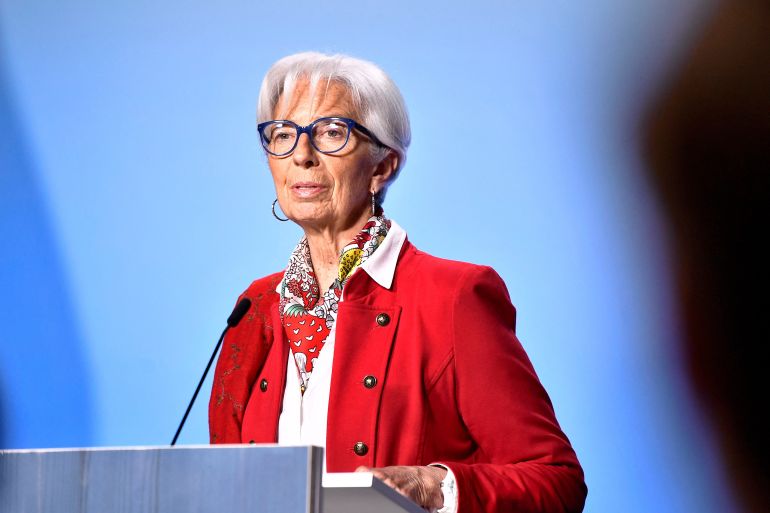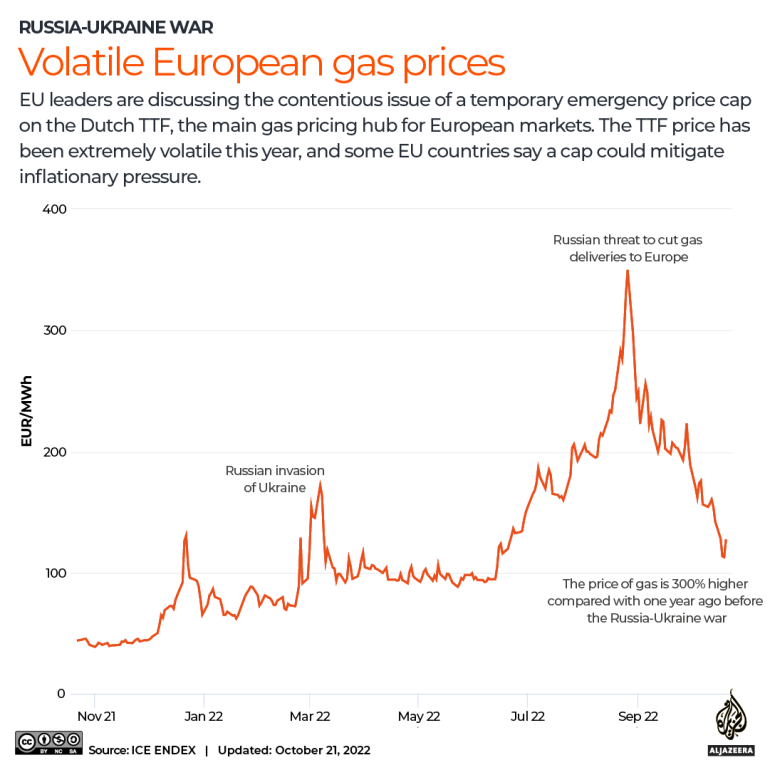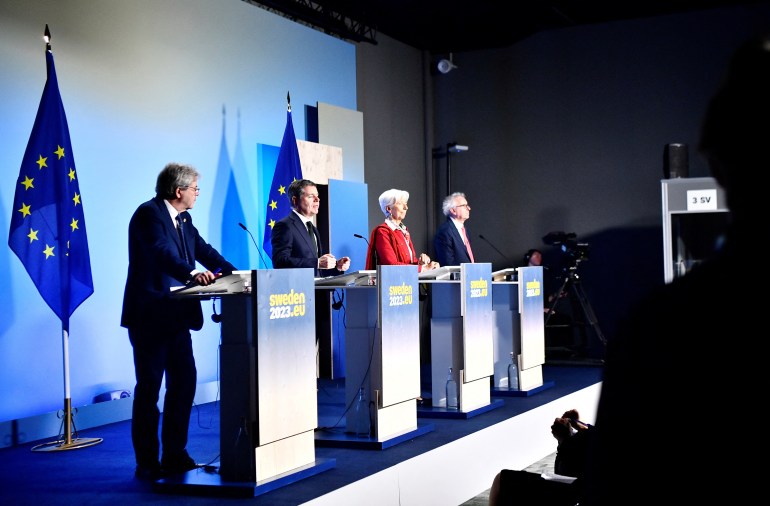Eurozone inflation rises to 7 percent after months of decline
Food, drink and energy prices keep climbing across the single currency area following Russia’s invasion of Ukraine.

Annual inflation in the eurozone rose to 7 percent in April, according to the European Union’s statistics agency, the first increase after five consecutive monthly declines.
Consumer prices edged up from 6.9 percent in March, which could further encourage the European Central Bank (ECB) to raise interest rates on Thursday. Analysts for FactSet and Bloomberg had predicted the rate would remain stable.
Keep reading
list of 3 itemsCan Europe replace Russian gas with renewable energy?
Attempts to silence journalists have increased in Europe: CPJ
The ECB has hiked rates repeatedly since July last year to rein in red-hot inflation, and analysts expect the Frankfurt-based institution to raise them again, though they are divided on how big the increase will be.
Following Russia’s assault on Ukraine last year, energy prices soared and helped push consumer prices higher across the single currency area, hitting a peak of 10.6 percent in October.
Inflation later fell thanks to a slowdown in the rate of energy price rises, but it still remains well above the ECB’s 2 percent target.

Food and drink prices keep climbing, putting pressure on European households, but the pace of the increase slowed to 13.6 percent in April after 15.5 percent in March, Eurostat said on Tuesday.
Energy prices increased 2.5 percent after falling 0.9 percent in March.
“The unexpected increase is the result of a bounce back in energy price inflation, after the strong negative base effect in March, and slightly higher service price inflation,” ING economist Carsten Brzeski said in a note.
The eurozone’s core inflation, which excludes volatile food and energy prices, fell slightly to 5.6 percent in March from 5.7 percent a month earlier.
“We expect headline inflation to continue falling, while core inflation will remain sticky,” Brzeski said.
Among the 20 countries that use the euro, Luxembourg had the lowest inflation rate, at 2.7 percent in April, Eurostat said.

The data showed that inflation in Germany, the EU’s biggest economy, slipped to 7.6 percent in April from 7.8 percent a month earlier.
But in France, consumer prices rose 6.9 percent last month after 6.7 percent in March, Eurostat said.
Many economists say the ECB will opt for a rate increase of 50 basis points (bp) on Thursday – as it did at its previous three meetings – while others think it will downshift to 25bp.
“Sticky inflation data clearly stresses the need to continue hiking but with last week’s weaker-than-expected GDP growth report and today’s weak loan growth and loan demand data, the case for slowing down the pace and size of rate hikes has become stronger,” said ING’s Brzeski, who expects an increase of 25 basis points.
The chief Europe economist at Capital Economics, Andrew Kenningham, said the figures “do not decisively tip the balance ahead of Thursday’s ECB decision” but added that the ECB could “pull a hawkish surprise by going for a 50bp rather than 25bp hike”.